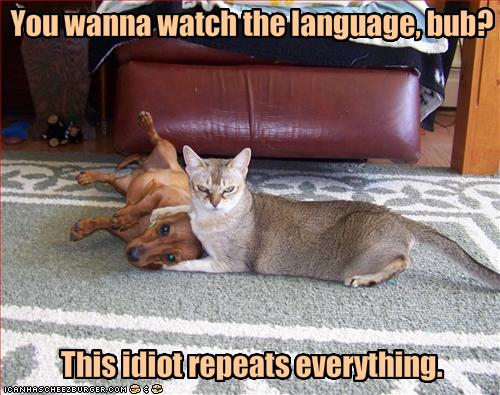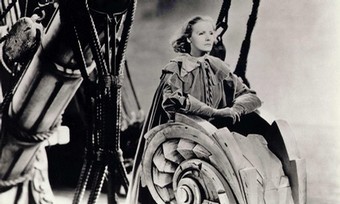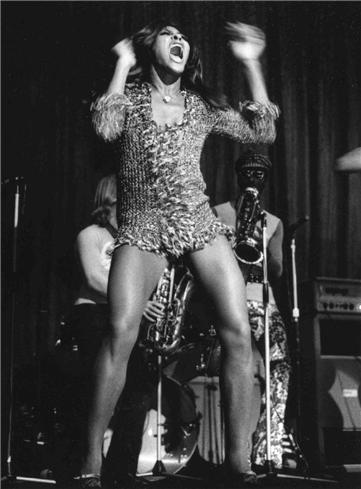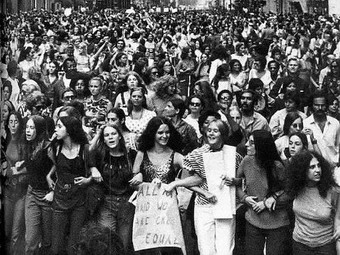Poor sewing machine.
Thread all knotted and tangled,
feed dog stuck,
presser foot mishandled.
Stitches –
interrupted,
tension –
discontented.
All because
I put
wrong bobbins
in
your bobbin holder.
Poor, poor sewing machine.
Poor sewing machine.
Thread all knotted and tangled,
feed dog stuck,
presser foot mishandled.
Stitches –
interrupted,
tension –
discontented.
All because
I put
wrong bobbins
in
your bobbin holder.
Poor, poor sewing machine.
Streets R Us v Harlem Hot Shots in the 2010 Oldschool Battle #2 – Round 16
How many times will I watch the clips from this competition? A million? A million billion? I love love love the Hot Shots’ action, but I’m even more excited by Streets R Us. I especially like this clip because Streets R Us are working with music which is probably much less familiar than the hippity hop the Hot Shots dance to later. But they really bring the right feel to the music. I especially like the way they work with the different rhythms in the song, picking out the half time, the ‘organised chaos’ of the final chorus, the insistent bumpbumpbump of the beat. It looks utterly modern and contemporary, but at the same time, it’s absolutely right.
The weirdest shit you come up with will not be even half as weird as the shit they did in the Olden Dayes. But that shouldn’t stop you trying.
miscellaneous Europeans in Lithuania in 2011
The Harlem Hot Shots performing at Frankie95
Bethany and Stephan at ILCH in 2008
I tag all these performances: EXCELLENTLY EXCELLENT.


I began this as a post where I’d just link up some badass solo comp clips from Lithuania. But it has become a sort of hardcore manual for feminist activism. Geez, bloody feminists. With the raging and the ranting. And the badass fall-off-the-logs. These are the things I say to myself; where I say ‘you’, I’m talking to myself. I’m encouraging myself to be more awesome. If this is too much for you, go back to the post full of clips. Or you can keep reading about how I love jazz dances because they’re built for feminist badassery.
A year or so ago, after I came back from about nine months off dancing with a shitful plantar fascia injury, I discovered the thing I’d missed most about dancing was the solo stuff. I love lindy hop. I love it so much. But I think, ultimately, I want to dance alone.
I like dancing alone, as in, not with a partner in a formal lindy hop dance (I do like dancing with other people on my own) for lots of reasons. One of the things that pushes many women in particular into solo dance is the lack of leads in their local scene. I use the word ‘push’ deliberately, because I suppose most women in a lindy hop scene approach social dancing looking for some partner dancing. Dancing alone is not always taught as a staple in regular classes, so most new dancers don’t feel as comfortable dancing alone as they do with a partner.
I like dancing alone because I’m often frustrated by leads who don’t listen to what I’m bringing, or more often, I’m frustrated by leads who just roll us through a series of fairly set combinations of moves without listening to the music. That drives me NUTS. For me, it’s the music that makes me dance. So I like to explore everything a song has got. If I’m being rushed through swingouts one after another, bang-bang-bang, there’s no time to explore the delaaaay that’s so central to swung rhythms, let alone all the other lovely layers in a song.
I do a lot of leading when I social dance. I get asked to dance by followers a lot, I ask other women to dance, and I also follow myself a lot. But I do like solo dancing most. I could WILL! make arguments about how women leading and solo dancing fuck up gender and power dynamics. In fact, I’ve done so, many times. And if you go out dancing in a scene where there are women leading, you can actually see how this shifts the social dynamics. Women aren’t just standing about on the side of the dance floor waiting for a dance, wondering if they’re not being asked because they’re a crap dancer/too fat/too old/too uncool/too weird/too horrible/wearing the wrong clothes, etc. Women aren’t rushing at male leads, competing for a dance. Women aren’t basking in the attention of a lead on the dance floor, grasping at a moment of confidence and self worth.
When women lead and solo dance in a scene, you see a shift away from bloke-centred social dancing dynamics. Suddenly all those women standing about on the side of the dance floor have moved onto the floor, experimenting with movements and rhythm, becoming better dancers, enjoying each other’s company and generally having a bloody good time. The blokes are no longer the centre of their universe.
I’m sure you can see how I then get particularly shitted off when a bloke wades in and drags a woman out of that sort of setting to dance with him. Back off, motherfucker! The hot shit is being brung!
How do you get to the point where you have lots of people (male female and inbetween) solo dancing as well as partner dancing at a ‘swing dance event’? Well, firstly, it’s worth pointing out that there’s next to no solo dance in rock and roll and the RnR type ‘swing’ dancing, at least not here in Sydney. When you go to those dances, most people only dance with people they know or even with just their own partner. Because that scene tends to be a bit older, a lot more conservative, and also rooted in a different dancing culture. I think that if you ground your lindy scene in vernacular jazz dance, then you’re setting yourself up with some nice conditions for solo dance as well as partner dance peppered with wonderful improvisation.
So how do you do that? Despite what you might think, reading this blog, I’m not actually a big fan of preaching at people. I like to work out my thinking and ideas in word-form, especially in places like this blog. But I firmly believe that if you want to initiate cultural change in a dance scene, you need to get your bad self out there on the dance floor and do it. Talk means nothing when you’re making a point about dance. Dancers are very much influenced by what they see on the dance floor. Duh. So if you want to see more solo dance in your scene, you need to get yourself out on that dance floor and do that solo dance. You need to do it with confidence, and with as much skill as you can. Work on that shit and be as good as you possibly can be. And if you can’t get any better, enjoy what you do badly and let that pleasure show.
In other words, you need to model the behaviour you want to see.
Same goes for women leading. If you’re a woman tired of the bullshit gender dynamics in your scene, get your fine self out there on the dance floor and model the shit you want to see. And do it well and with confidence. Own it. Work on it in your own time or in classes and improve. Don’t let your leading be a novelty. Let it be a legitimate act. Don’t enter comps hoping to get noticed just because you’re different. Go in comps and bring the best shit you’ve got. The novelty will wear off; you’re going to need to back up your claims with some pretty good stuff.
And I also think it’s important to say positive, encouraging things to people who are doing awesome stuff. Or, really, if you see the awesome, applaud it! Rather than getting shitty and snarky about something that shits you (eg not getting asked to dance by blokes), get positive and supportive. There’s no point continuing the nastiness of dodgy culture by making yourself unhappy. After all, that’s how patriarchy works: women and men collude in their own oppression. Seek out the unusual and the wonderful. If someone has a brilliant idea, tell them it’s brilliant! Don’t get jealous and resentful! Sometimes being an audience – the response to the call – is more important than being the performer. In practical terms, if you see someone do a rockhardawesome boogie back, cheer them, loudly! And then tell them, later, that you thought that was totally cool.
I think of this as a very nice approach to all sorts of social activism. Just talking about this stuff is fairly useless. This is why I think that we shouldn’t just be doing scholarly writing and talking about gender and power. We also need to get out there and do feminist stuff. To be feminists, with our bodies as well as with our brains. I know a lot of academics feel that theorising activism and culture is how they contribute to feminism, but I feel very strongly that this only touches a small proportion of our community directly. No, writing newspaper articles isn’t a way to ‘engage’ with the wider community. It’s too safe, yo, and too distant. Take a risk. Let yourself be changed.
I think that we need to bloody well open our eyes and engage with the everyday places in our lives where we can make a difference. On the bus. At the shops. In cafes. On the dance floor. Make eye contact, hold doors open, step in when someone needs a hand, ask your employer if they do maternity leave, even if you don’t need it yourself. And I also think it’s a good idea to make it as fun as you can. Getting angry is useful. But in and of itself, it’s not productive. You need to be an agent for positive, constructive change, as well as a mighty smashing force of rage. Find small ways, everyday, where you can fuck shit up. Or at least vibrate at very low frequencies until you rattle that patriarchal bedrock to bits.
That’s why I like dance. Fucking up the patriarchy, smashing gender binaries and generally being difficult can be super fun. It can also be positive, friendly and engaging. You won’t win friends to your cause by being rude and aggressive. But you will by making jokes, being kind and friendly, and by being sneaky. Jazz dance is built for this stuff. As the public discourse of an oppressed people, African American vernacular jazz dance has all the tools you need for misbehaving.
Ok, so yes, modelling stuff in a social setting is important. What if you’re a teacher and you want to see more solo dance in your scene, regardless of gender? Same goes. Get out there and do it. Do it in a social setting, but also get out there and do performances. You need people to see what makes solo dance so awesome. And then you need to make them want to do it too. It’s no good you just getting out there on your own every week if you want to see new stuff in your scene. Other people have got to want to do it too.
Running classes in solo dance is the next obvious step. I’m a big fan of classes devoted to solo dance. But I’m even more a fan of classes which work on combining solo and partner dance. How do you fit a shorty george into your swingout? Why is the shim sham an absolute gold mine for steps to add into your lindy hop? I don’t like to use the phrase ‘variations in a swing out’ because it suggests that the swing out is still the centre of the dance and the jazz steps are ‘variations’ on that single step.
Yes, swing outs are central to lindy hop. But this isn’t a one note song. I think that jazz steps – dancing alone – is just as, if not more important than, the swing out. So when you use jazz steps – things like shorty george, suzy Qs, kick-ball-changes, broken-legs, crazy-legs, and so on – think of the swing out as a framing device for your hot shit jazz step. Or better yet, deliberately choreograph sequences that break partners apart and require some sort of solo bling. I think that if you’re teaching solo jazz steps – jazz steps – as an integral part of your lindy hop, and as key part of your classes, you’re setting up students with the skills and materials for dancing alone on the social dance floor. You’re creating the expectation of improvisation. You’re provoking creativity.
So, to sum up, this is what I say to myself when I’m going dancing or working on dance:
I don’t know if this is a useful approach for everyone. It can be tiring, being so determined. Sometimes it is nice to just sink into following, and to become the extension of some bloke’s creative vision. But I figure, that’s ok. Just don’t make everything you are the result of someone else’s ideas. Do misbehave. Do be that Difficult Woman, if only in a little way, sometimes.
I’m back to being sceptical of the Slutwalk thing. I had been having trouble articulating the way the movement has been accepting the language and discourse of mainstream culture. I didn’t like the way they were ‘reclaiming’ the word slut rather than saying “Hey, can we talk about sexual violence in a way that uses our own language rather than accepting the premise of the discussion?” Not In My Name: Part I at The Referral makes a few of the points that I wanted to raise but couldn’t quite get out properly. She continues with a discussion of how media coverage of slutwalks might go in Confessions of a Slut-Shamer.

Here’s the setlist I did at the Speakeasy on Saturday 21st May and talked about in Everything I did was funky: Cell Block Swing & Speakeasy.
The photo Tina Turner was taken by Barry Wentzell at the Odeon in 1971. I found it in multiple places online. You can buy prints, too. Tina Turner: extreme awesome.
title – artist – album – bpm – year – song length
Knock on wood – Ike And Tina Turner – The Ike & Tina Turner Archive Series : Hits & Classics Vol.1 – 119 – 2:31
Everything I Do Gonh Be Funky – Lee Dorsey – Working In The Coal Mine / Everything I Do Gonh Be Funky – 135 – 3:11
Respect – Aretha Franklin – Greatest Hits – Disc 1 – 114 – 2:25
Waitin’ and Drinkin’ Di – Anne Price – 88 Steps to the Blues – 126 – 2009 – 3:16
When I Get Low – Gordon Webster (with Jesse Selengut, Matt Musselman, Cassidy Holden, Rob Adkins, Jeremy Noller, Adrian Cunningham) – Live In Philadelphia – 107 – 2010 – 5:27
Let’s Do It – Terra Hazelton (feat. Jeff Healey, Marty Grosz, Dan Levinson, Vince Giordano) – Anybody’s Baby – 126 – 2004 – 4:28
Lemonade – Louis Jordan and his Tympany Five Louis Jordan And His Tympany Five (vol 5) – 117 – 1950 – 3:17
What A Man – Linda Lyndall – The Complete Stax/Volt Soul Singles Volume 2: 1968-1971 – 86 – 2:42
You’re Losing Me – Ann Sexton – Stone Cold Funk – 113 – 1971 – 2:22
Chain Of Fools – Aretha Franklin – Greatest Hits – Disc 1 – 116 – 2:48
Here I Am (Come and Take Me) – Al Green – Greatest Hits – 95 – 1975 – 4:15
Things are Slow – Barbara Dane – I Hate the Capitalist System – 91 – 4:17
Black Rat (take 4) – Big Mama Thornton (with Muddy Waters, James Cotton, Otis Spann, Sammy Lawhorn, Luther ‘Guitar Junior’ Johnson, Francis Clay) – With the Muddy Waters Blues Band, 1966 – 101 – 1966 – 2:53
A few of my current favourites, a few of my really old favourites (Anne Sexton), a few overplayed soul classics. But really, when does ‘Respect’ get old? When we live in a postpatriarchy, baby.
You can read more about my DJing this set at the above link where I go into the night in lots of detail. But for now, this’ll do.
Another reminder that green/feminist movements are as marked by gender and class as right wing politics…
I’m seeing correlations between slutwalk discourse and this little trail of articles dealing with race/food politics/gardening/environmentalism/cycling. While I’m fascinated by discussions of food and health and environmentalism as a socialist project, for a while now I’ve had a little voice in the back of my brain saying “Dood, where’s race in all this? Can we talk about ethnicity a little bit more? And not in a ‘Mysteries of the Orient’ Food Safari way?” I stumbled over The Doree Chronicles’ post ‘The Unbearable Whiteness of Eating: How the Food Culture War Affects Black America’ on Tumblr, then traced its references back. This post read as a sort of snippet of idea, in the context of a general Tumblr blog dealing with all sorts of things the author found interesting. Tumblr shits me a bit as this sort of backtracking is unnecessarily complex, but I guess that’s a consequence of personal sites which encourage a ‘collector’ approach rather than a ‘writerly’ approach.
From that little post linking food politics, race, ethnicity and the bike movement, I found Erika Nicole Kendall’s post ‘The Unbearable Whiteness of Eating: How The Food Culture War Affects Black America’ on the Black Girls Guide To Weight Loss site. This post framed the discussion within a broader discussion of race and gender and weight loss as a health issue.
This post led me to Janani Balasubramanian’s piece ‘Sustainable Food and Privilege: Why is Green Always White (and Male and Upper-Class)’ which linked the bike movement talk to race and gender and environmentalism and food politics. I like this piece for the way it links gender to food production, and I like the question:
Can Pollan not drive home the point that Americans need to cook more often without guilting American feminists?

I’m really not up to speed with food politics’ talk, but I feel as though all this talk is echoing some of my reservations about slutwalk, and some of my thoughts about food politics. It also reminds me of some things I’ve read about the civil rights movement in America in the 60s, where the peace movement in particular was also quite sexist. In that context, the ‘free love’ discourse was a double-edge sword. While the pill gave women contraceptive control of their sexuality and bodies, there was also an attendant shift in the way many men began thinking about these women as ‘sexually available’. I wonder if we should perhaps be a little sceptical of a new women’s movement (or new stream in a broader feminism) that lauds heterosexual freedom in such uncomplicated ways. Because of course the pill didn’t function the same way, ideologically, for lesbian women that it did for straight women.
I feel as though we’re also revisiting issues raised (and continually raised) by women of colour from that period and recently. For those women race was a far more pressing concern, organising their activism in a way that gender did not. And these women were very critical of ‘mainstream’ feminists for not interrogating their own privilege. Or, more simply, for not noticing that everyone signing books in the wimminz bookshops was white.
 I’m of course thinking about bell hooks and Ain’t I a Woman?: Black Women and Feminism, but I’ve also heard Australian Aboriginal women like Marcia Langton make similar arguments. I haven’t found it, but I’d be certain there’d be some cool stuff written about ‘bush tucker’, the Northern Territory intervention (where government pensions are ‘retained’ specifically for buying food), gender and equity. I’m also certain that there’d be some really interesting stuff by migrant women writers in Australia (and elsewhere) about food, gender, class and social (as well as bodily) ‘health’. Someone has to have taken the bike movement to task as well? I mean, if I’m banging on about it on Faceplant when people say stupid things like “There is no excuse not to ride distances under 10km”, then surely someone else has made the same points more cleverly?
I’m of course thinking about bell hooks and Ain’t I a Woman?: Black Women and Feminism, but I’ve also heard Australian Aboriginal women like Marcia Langton make similar arguments. I haven’t found it, but I’d be certain there’d be some cool stuff written about ‘bush tucker’, the Northern Territory intervention (where government pensions are ‘retained’ specifically for buying food), gender and equity. I’m also certain that there’d be some really interesting stuff by migrant women writers in Australia (and elsewhere) about food, gender, class and social (as well as bodily) ‘health’. Someone has to have taken the bike movement to task as well? I mean, if I’m banging on about it on Faceplant when people say stupid things like “There is no excuse not to ride distances under 10km”, then surely someone else has made the same points more cleverly?
 I’ve just had a quick look but I CAN’T find that interesting study a Victorian university group did recently where they found that if women felt safe cycling in a city, then the numbers of cyclists in that city over all were higher. I was telling this story to some hardcore environmentalist/sustainable energy types at a party the other week, and they were all “Oh shit, I’d never thought of that!” And I was thinking ‘That’s because you’re over-achieving, able bodied, young, male engineers living in well-serviced cities who dismiss feminism as ‘something for women’.’ But I didn’t say that out loud. Instead I laboured through a gentle (and brief) point that environmental movements have to be socially sustainable as well as environmentally sustainable. I wanted to talk about how birth control for women in developing countries is directly related to environmentally sustainable development in those same countries, but I didn’t.
I’ve just had a quick look but I CAN’T find that interesting study a Victorian university group did recently where they found that if women felt safe cycling in a city, then the numbers of cyclists in that city over all were higher. I was telling this story to some hardcore environmentalist/sustainable energy types at a party the other week, and they were all “Oh shit, I’d never thought of that!” And I was thinking ‘That’s because you’re over-achieving, able bodied, young, male engineers living in well-serviced cities who dismiss feminism as ‘something for women’.’ But I didn’t say that out loud. Instead I laboured through a gentle (and brief) point that environmental movements have to be socially sustainable as well as environmentally sustainable. I wanted to talk about how birth control for women in developing countries is directly related to environmentally sustainable development in those same countries, but I didn’t.
I think there are also some really important points to be made about ‘food security’ for children in poor communities and families in big cities, and how food security is directly related to educational and social achievements, and how getting enough to eat (let alone eating ‘well’) is directly related to justice and equity in relation to gender and race and all those other lovely identity markers. I don’t know much about this at all, but I heard an interesting Health Report podcast about this and started thinking about the relationships between organic gardening, social justice, ethnicity and economic power. And goddamn bicycles.
To sum up this messy, ill-informed, poorly researched and unsubstantiated introduction to my mess of thoughts, I direct your attention to Tammi Jonas, who’s trekking through the American wilds with the Jonai clan in glorious 70s campervanning style, writing and thinking about food and family as she goes. Her progress is written up at Crikey, but I quite like the posts on her blog. Tammi is all over these issues.
I’d also suggest some time with Cristy Clark who’s exploring ecotarianism in real-family settings (ie, her own), and of course do drop in at Progressive Dinner Party to see related issues taken up. If you’re especially interested in kids and food, then PDP’s Head Cook Zoe is a good source, not to mention the Stephanie Alexander Kitchen Garden Foundation, which is all about kids, food and well-being.
Megastars performing live at The American Folk Blues Festival 1962-1966
While we’re talking call and response, interaction between band members, and the way a performance can require your involvement. These guys are the reason why I think we have to talk about blues when we talk about jazz, and why dancing slow and low down is as important as dancing fast and furious.
Also, all your badassery is belong Victoria Spivvey.
[edit: There are three volumes of the amazing film documenting these festivals, and you find them all on amazon. There are also lots of recordings of the music (the same versions as in these clips) on emusic, amazon, etc. Just search for the title. Holy SMOKES.]